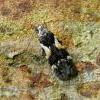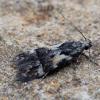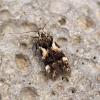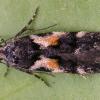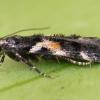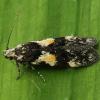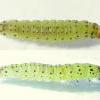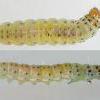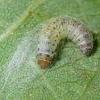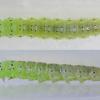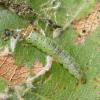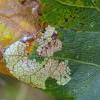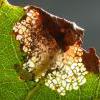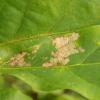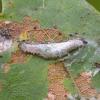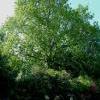35.143 Teleiodes luculella (Hübner, 1813)
Status and Distribution
Locally common over much of England as far north as Lancashire and Yorkshire; local to very local in south-west and northern England and Wales; rare in Ireland and the Channel Islands. Apparently absent from Northern Ireland, Isle of Man and Scotland.
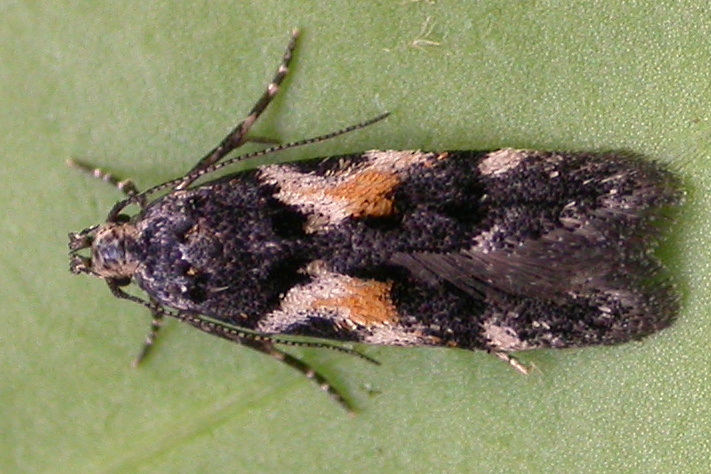
Provisional map
Habitat
Finding the Moth
Larva: feeds between two spun leaves or on the underside of a leaf from a silken tube (the latter feeding method was previously only reported in Europe but found in Britain in Manchester during 2015 (B. Smart pers. comm.). The moth has been bred from a pupa found in a spongy oak gall in March in Hampshire on one occasion.
Adult: rests on tree-trunks during the day and later comes to light. Has been attratced to light placed 14metres up in the tree canopy.
Similar Species
Teleiodes flavimaculella is similar to T. luculella except that in the former species the paler markings in the basal half of the forewings are orange in colour or absent giving it a darker overall look. In T. luculella, the colour in this area is pale yellowish to yellowish-white and these marking curve to make a semi-circle touching the costa (leading edge) at both ends. T. flavimaculella has narrower forewings in the distal (outer) half.
A specimen in the Hope Entomological coll., Oxford, caught by D. Ffennell in July 1969 at Lyndhurst lacks the whitish forewing markings.
Considered to be single brooded in the Moths and Butterflies of Great Britain and Ireland Vol. 4 (2) and reported as flying during May and June. On the Recording Scheme database there are around 2100 records covering a flight period from late April to late September with peak emergence from mid-May to early August. The flight graph appears indicative of a species with an extended flight period rather than two separate broods but, intriguingly, most of the September records are from one site in London.
It is also reported as single brooded in northern Europe but there are reports that the larva has been noted in two generations (June-July and September), by inference, in southern Europe. The larva have only been reported in September and October in Britain.
Earliest: 22nd April - 1982 (VC8), 2007 (VC17) and 2011 (VC37)
Latest: 28th September 2011 (VC16)

